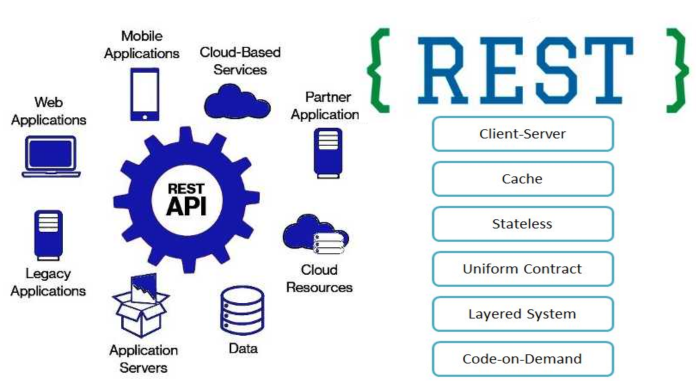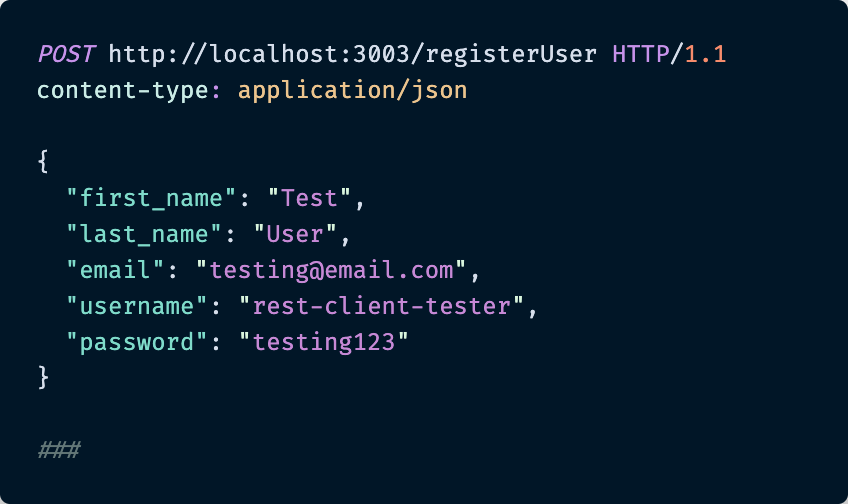In today’s digital world, RESTful APIs (Representational State Transfer APIs) form the backbone of communication between client applications and servers. They provide a structured way for frontend applications to request and retrieve data from the backend, making them essential for web development. This post dives into the basics of RESTful API architecture, including its core principles, uses, and best practices.
What is RESTful API Architecture?
RESTful APIs are based on a set of principles that define how web standards like HTTP should be used to create, read, update, and delete resources. Built on the REST (Representational State Transfer) architecture, these APIs follow a stateless approach, meaning each request from a client to a server must contain all information required to fulfill the request.
Key Principles of RESTful Architecture
The REST architecture follows several key principles, including:
- Statelessness: Each client request to the server must include all necessary information for processing.
- Uniform Interface: A consistent and standard set of rules that define how resources are accessed.
- Layered System: The structure allows the setup of intermediaries, such as load balancers and firewalls, enhancing security and scalability.
These principles help simplify backend communication, making error handling more effective when designing backend applications. For more on this, explore this guide on Error Handling in Backend Applications, which covers techniques to create stable, user-friendly APIs.
Core HTTP Methods in RESTful APIs
RESTful APIs typically operate using HTTP methods, each serving a specific purpose:
- GET: Retrieves data from a server.
- POST: Submits new data to a server.
- PUT: Updates existing data on a server.
- DELETE: Removes data from a server.
Each of these methods enables CRUD (Create, Read, Update, Delete) operations, which are fundamental to any interactive application.
Connecting Frontend and Backend with REST APIs
To ensure smooth functionality, frontend and backend systems need effective communication through REST APIs. The frontend requests data, while the backend responds accordingly, providing the necessary resources or feedback. By Connecting the Frontend to the Backend with REST APIs, developers can facilitate seamless data flow, enabling users to experience real-time updates.
Quote: “In a RESTful architecture, simplicity and structure are key, making it easier to scale, manage, and debug applications.” This simplicity is particularly beneficial for large applications that may require multiple connections and data points.

Best Practices in RESTful API Design
- Use Consistent Naming Conventions: Make sure endpoints are simple, clear, and follow a consistent pattern.
- Error Handling and Status Codes: Use status codes to inform clients about request outcomes. For example,
200 OKfor success,404 Not Foundfor missing resources, and500 Internal Server Errorfor server issues. The Error Handling in Backend Applications article provides further insight into handling errors effectively. - Data Validation: Validate incoming data to ensure API stability and security.
- Document the API: API documentation helps other developers understand the endpoint functionalities and expected responses. Good documentation also assists in maintaining the API over time.
Implementing a Simple RESTful API
Creating a simple RESTful API can be achieved using backend languages like Node.js, Python, or PHP. Here’s a basic workflow:
- Setup a server: Use a framework such as Express in Node.js to handle API requests.
- Define Endpoints: Set up endpoints that allow clients to interact with backend resources.
- Handle Requests and Responses: Process client requests and deliver responses in JSON format.
To better understand managing and handling errors in backend apps, refer to the detailed article on Error Handling Best Practices and Techniques

Conclusion
Mastering RESTful API architecture is essential for modern web and app development. Understanding its principles, utilizing HTTP methods, and implementing best practices ensures that APIs remain efficient, scalable, and easy to maintain. By carefully planning error handling, validating data, and maintaining proper communication between frontend and backend, developers can significantly enhance the user experience. Embrace RESTful API best practices, and you’ll create applications that are robust and reliable.









